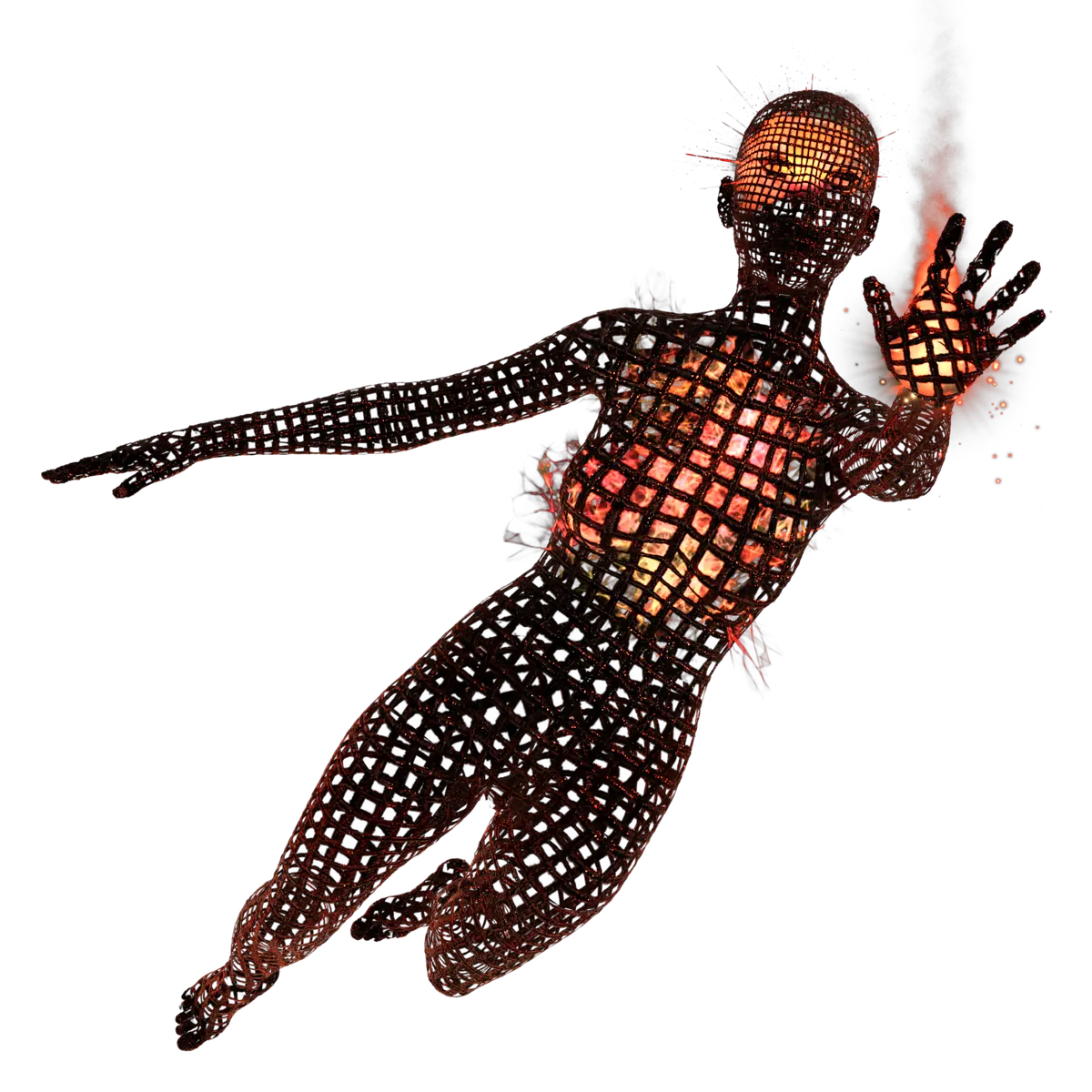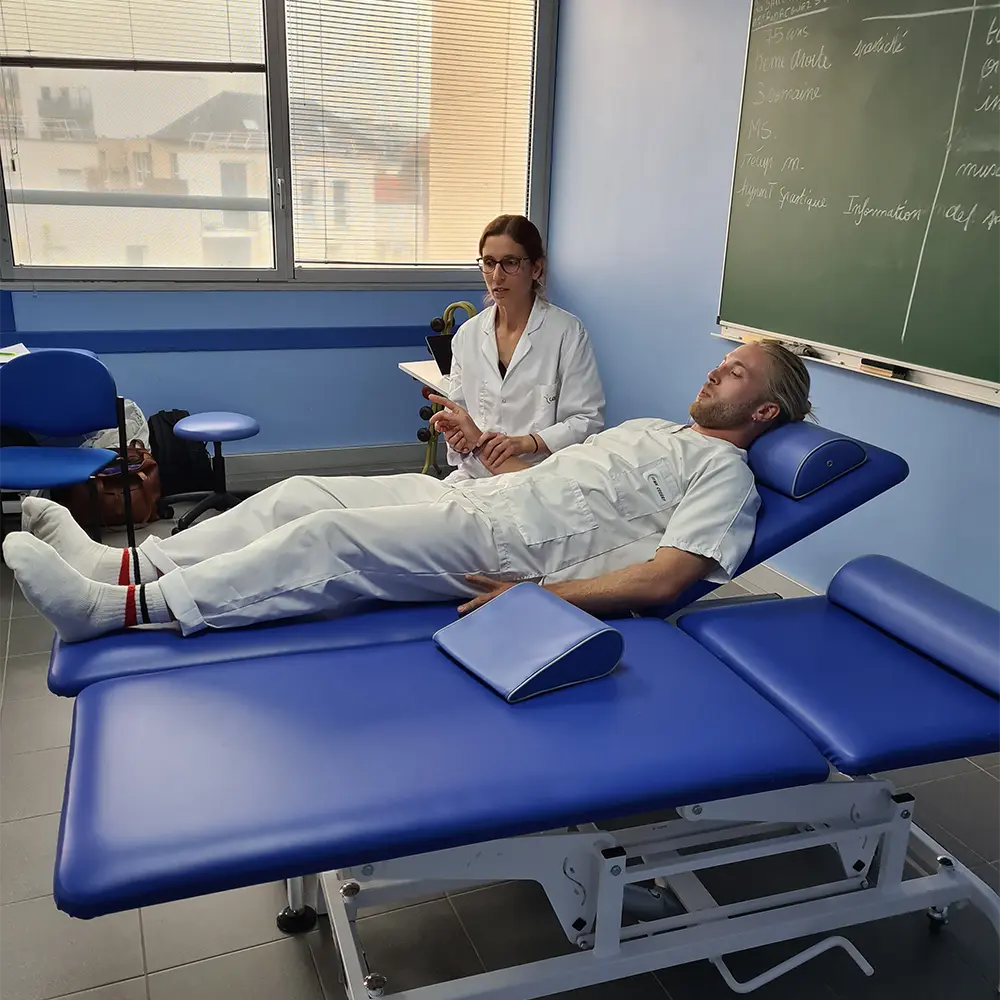Focus on our teacher : Nadine STREIT

The CEERRF sets up a hot news every month, it is a focus on its teachers, their expertise or one of their works which are shared here and brought to your attention.
Physiotherapist for nearly twenty years, I quickly became interested in neurology and patient knowledge and I practiced for ten years in various rehabilitation centers.
It will first be within a multidisciplinary team offering treatment for the spasticity of children suffering from cerebral palsy that we will develop a therapeutic education project. Observing a low compliance with the care of equipment and physiotherapy exercises and a weak understanding of the pathology of these children and their parents, we have developed therapeutic maps aimed at improving this knowledge and facilitating the monitoring of rehabilitation programs.
Patient knowledge
More general questions then led me to a master’s degree in educational sciences. How does medical information flow to patients, what do they know about their disease? What type of information do they have access to on the internet and mass self-communication social networks? What is the value of the patient experience and the information flowing through patient groups on these networks?
After several interviews and an analysis of the content of the exchanges on these virtual communities, the conclusion of this work will be that the social networks of mass self-communication allow patients to exchange their therapeutic experiences. Medical, paramedical and complementary medicine treatments are subject to criticism and informal evaluation. Behind these communities hide potential knowledge that it would be interesting to formalize.
Neurological disability
This master’s degree opened the door to teaching in physiotherapy schools where I now teach neurology. The school curriculum of our profession evolving little by little towards universitarization, wishing to improve my teachings and always eager to learn, I embarked on a master’s degree in medical biology with “neurological handicap” option. This master allowed me to start a systematic review on the interest of electrical stimulation in the management of spasticity. A CEERRF student and a colleague are currently acting as second reviewers. Spasticity, involuntary muscular hyperactivity due to damage to the pyramidal pathway, is a phenomenon against which physiotherapy techniques have little or no effectiveness. Electrostimulation could significantly reduce this muscle hypertonia and facilitate joint mobility by stimulating muscles antagonistic to spastic muscles. We hope that we will obtain relevant outputs from this work in order to propose new and more effective rehabilitation techniques.
This return to hard sciences will force me to think more from a statistical point of view and levels of evidence. But behind these statistics and these levels of proof hides the human being in all his complexity: what are his motivations to live and fight when the disease knocks on his door? Joy ? Happiness ? Social relationships? Pleasure and especially the one we don’t talk about but which influences a large part of our life? Access to the latter can be seriously compromised during neurological damage. Many patients are afraid to talk about it and many health professionals do not know the subject well and are not able to help them.
Sexuality and Neurological Disability
A DIU in Sexual Health and Human Rights allowed me to explore this topic.
Our choice of partner depends partly on innate, unconscious and unmodifiable cognitive structures linked to primitive instincts, as well as acquired cognitive structures which are also unconscious but partly modifiable, linked to our education, the influence of our groups of membership and the media.
Our society claims to be more and more inclusive; it should therefore carry less stereotypes concerning the sexuality of minorities and be made up of larger and more inclusive groups. At the same time, a paradigm shift concerning the definition and management of disability has emerged in recent decades with the notion of participation; society becomes responsible for the limits encountered by its citizens within it and by definition, the notion of disability becomes contextualized.
However, despite these structural changes, the term disability, designating a social group, remains the predominant generic term at the heart of the debates, maintained by contradictory feelings of both “horror” and “angelism” that it evokes. In the words of Professor Hamonet [1], “these emotions are perhaps a particular expression of social archaisms and ancestral fears of the other”. However, remember that a paradigm shift requires a modification of old patterns within the whole society towards new social representations.
In this work, I was interested in stereotypes around the sexuality of people with motor disabilities and the way they are conveyed within our profession in order to identify the clichés relayed in our society. This work will be continued this year by a 4th year student at CEERRF.
Brain plasticity
You will therefore not be surprised if I embark, in a few weeks, on a doctoral research project on the secondary erogenous zones of spinal cord injured patients. To better understand this topic, I invite you to watch the movie “Intouchables“, if you have not already done so. We are more than certain today that our brains are highly plastic. But this plasticity has its limits and is still hardly known by scientists. The well-being and personal development sector took over this concept. Besides, aren’t the aisles of bookstores full of books on this well-being, intelligence, performance and so on? To what extent can human beings adapt, evolve and modify their perceptions in order to improve their performance, feel better or compensate for a deficit?
Pain and magical thinking
Unfortunately, “the dark side of plasticity” [1], would favor the appearance and persistence of chronic pain. According to the biopsychosocial approach, a paradigm that has become predominant today in medical research, chronic pain could persist despite the disappearance of its nociceptive origin in an unfavorable psychosocial context. The most current hypothesis within the neurosciences is that chronic pain, recognized as a full disease, could have as its origin or subsequently lead to a structural and functional reorganization of the brain [2].
This cerebral reorganization would lead to negative behaviors and emotions and a slowdown in other cognitive functions.
According to many scientific articles and health professionals, it is important to make the patient aware of the partly psychosocial origin of chronic pain. This pain could also hide an explicit request from the patient, reflecting a deeper existential suffering. However, it should be remembered that the psychosocial origins of chronic pain remain hypothetical and that patients feel little understood, discriminated against or even discriminate against this suffering.
Thus, for now, scientists have not issued any conclusion concerning the psychosocial suffering related to pain: is it the origin or the consequence? So how to help the patient who suffers despite ignorance of science? The risk, faced with this physiopathological void and this inability to help patients, would it not be to fill it with false beliefs? The current context of hospital crisis and the few existing pain units is the breeding ground for these magical thoughts for overworked health professionals. What does the experience of patients tell us about this subject? This work has just been finalized for the validation of the DIU qualitative research in health and I hope to be able to include a student next year.
Through my teaching, I hope to give students a taste for neurology, a medical field that needs physiotherapists and a promising scientific field in research in our discipline. My motto is reflexivity so as not to fall into repetitive and inefficient professional practices.
Some people say they admire me for this determination to pursue studies. This qualifier does not suit me; I would rather say that studying is part of my personality.
Linking speeches, observations, writings with objectivity is something very difficult. We observe, research, question, try to analyze and understand human complexity. Stopping our thinking to settle on an end point will only make the truth partial. This is why science exists, to better understand life and its weaknesses. I am delighted to participate in the building of science itself as a drop in the ocean. Would humanity be anything without knowledge and science?
Finally, my path has also been shaped by the curious and interested students who encourage me to always look further, as well as the benevolent, jovial and studious atmosphere that reigns within the CEERRF.
[1] Hamonet C. (2016). Les personnes en situation de handicap. Presses Universitaires de France, Que sais-je ?
[2] Brown, Arthur, et Lynne C. Weaver. « The Dark Side of Neuroplasticity ». Experimental Neurology 235, no 1 (mai 2012) : 133‑41.
[3] Osinskin T, Pallot A, Rééducation des patients douloureux. Elsevier Masson SAS. [cité 17 août 2022].






